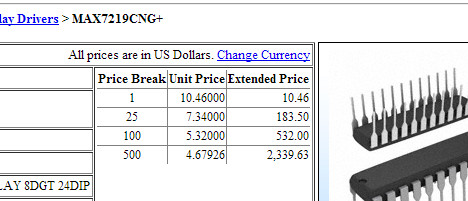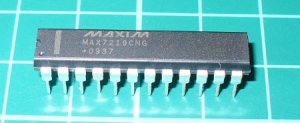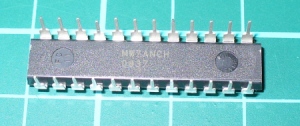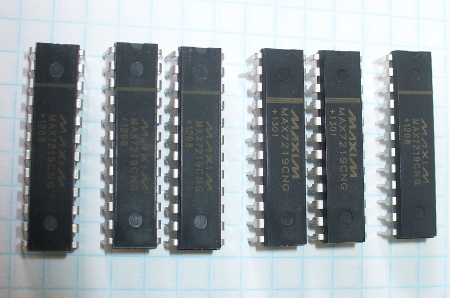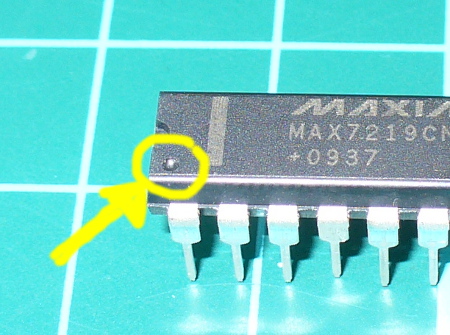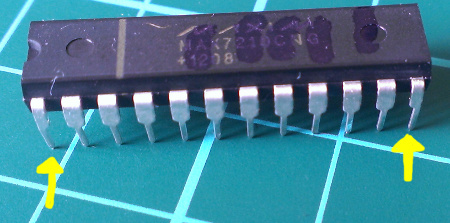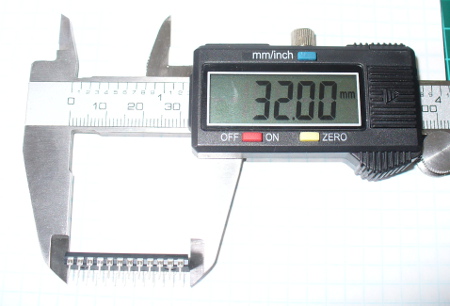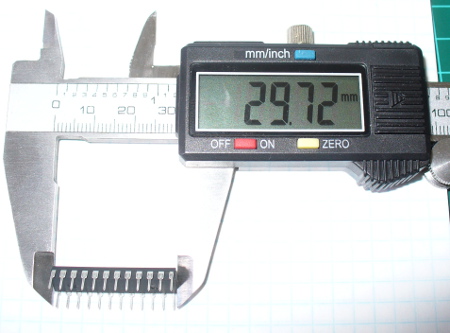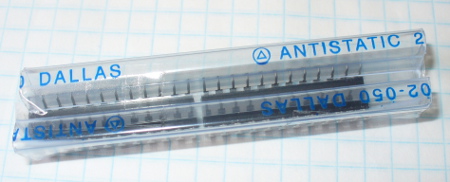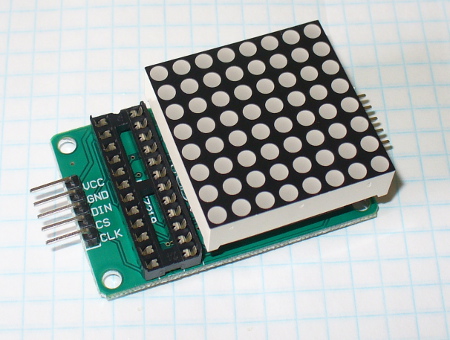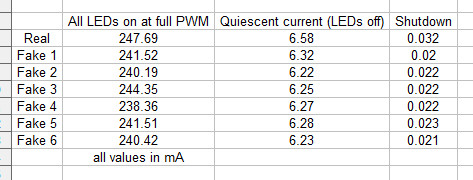15
The MAX7219 LED display controller – real or fake?
arduino, as1107, COM-09622, comparison, controller, counterfeit, dallas, display, fake, LED, matrix, MAX7219, maxim, part, part review, product review, real, review, supplier review, tronixstuff Comments Off on The MAX7219 LED display controller – real or fake?
Introduction
If you’re experimenting with various Arduino or other projects and working with LED matrices or lots of LEDs – you may have come across the Maxim MAX7219 “Serially Interfaced, 8-Digit, LED Display Driver” IC. It’s a great part that can drive an 8 x 8 LED matrix or eight digits of seven-segment LED displays very easily. However over the last few years the price has shot up considerably. Supply and demand doing their thing – and for a while there was also the Austria Microsystems AS1107 drop-in replacement, which could be had for a few dollars less. But no more.
So where does the budget-minded person go from here? Charlieplexing? Lots of shift registers? Or dig a little deeper to find some cheaper units. With a MAX7219 heading north of US$10 in single units, they may turn to ebay or other grey-market suppliers in the Far East. Everyone likes to save money – and who can blame them? However with the proliferation of counterfeiting, “third shift” operations and other shifty practices – is buying those cheaper examples worth it?
A few people have been asking me of late, and there’s only one way to find out … so over the last month I ordered eight random “MAX7219s” from different suppliers on ebay and will compare them to the real thing using somewhat unscientific methods, then see how they work. The funny thing was that after five weeks only six of the eight arrived – so there’s risk number one: if it doesn’t come from a reputable supplier, it might not come at all. Funny stuff. Anyhow, let’s get started by looking at the differences between the real MAX7219 and the others.
Pricing differences
The easiest hint is the price. The non-originals are always cheaper. And if you wonder how much the real ones are in bulk, the quickest indicator is to check the Maxim website and that of a few larger distributors For example the Maxim “sticker price” for 1000 units is US$4.18 each:
How much at Digikey? Lots of 500 for US$4.67 each:
And you wouldn’t buy just one from element14 at this price:
However in fairness to element14 they will price match if you’re buying in volume. So if you can get a “MAX7219″ delivered for US$1.50 – there’s something wrong. Moving on, let’s examine some of those cheap ones in more detail.
Visual differences
If you’ve never seen a real MAX7219 – here it is, top and bottom:
And here’s our rogue’s gallery of test subjects:
In a few seconds the differences should be blindingly obvious – look at the positioning of the printed bar across the part, the printing of the logo, and the general quality and positioning of the printing. Next, those circles embedded in the top of the body at both ends of the part, and the semi-circle at the top end. And if you turn them over, there’s nothing on the bottom. Furthermore, there isn’t a divot indicating pin 1 on the fakes, as shown on the real part:
Oh – did you notice the legs on the real one? Look closely again at the image above, then consider the legs on the others below:
Finally, the non-originals are shorter. The Maxim width can fall between 28.96 and 32.13 mm – with our original test MAX7219 being 32 mm:
and all the test subjects are narrower, around 29.7 mm:
Fascinating. Finally, I found the quality of the metal used for the legs to be worse than the original, they were easier to bend and had trouble going into an IC socket. You can find all the physical dimensions and other notes in the data sheet available from the Maxim website. Finally, this packaging made me laugh – knock-offs in knock-off tubes? (Maxim purchased Dallas Semiconductor a while ago)
Weight difference
Considering that they’re shorter, they must weigh less. In the following video I put the original on the scales, tare it to zero then place each test subject – you can see the difference in weigh. The scales are out a bit however the differences are still obvious:
However over time the manufacturers may go to the effort of making copies that match the weight, size and printing – so future copies may be much better. However you can still fall back to the price to determine a copy.
Do they actually work?
After all that researching and measuring – did they work? One of the subjects came with a small LED matrix breakout board kit:
… so I used that with a simple Arduino sketch that turned on each matrix LED one at a time, then went through the PWM levels – then left them all on at maximum brightness.
#include "LedControl.h" LedControl lc=LedControl(12,11,10,1); // data, clock, load, 1 MAX7219
void setup()
{
lc.shutdown(0,false);
lc.setIntensity(0,15);
lc.clearDisplay(0);
}
void single() {
for(int row=0;row<8;row++) {
for(int col=0;col<8;col++) {
delay(25);
lc.setLed(0,row,col,true);
delay(25);
for(int i=0;i
void loop()
{
single();
for (int n=0; n<5; n++)
{
for (int z=0; z<16; z++)
{
lc.setIntensity(0,z);
delay(100);
}
for (int z=15; z>-1; --z)
{
lc.setIntensity(0,z);
delay(100);
}
}
lc.setIntensity(0,15);
do { } while(1);
}
Here’s the real MAX7219 running through the test:
And test subjects one through to six running it as well:
And from a reader request, some current measurements. First the current used by the entire matrix module at full PWM brightness, then with LEDs off, then the MAX7219 in shutdown mode:
Well that was disheartening. I was hoping and preparing for some blue smoke, dodgy displays or other faults. However the little buggers all worked, didn’t overheat or play up at all.
Conclusion
Six random samples from ebay – and they all worked. However your experience may vary wildly. Does this tell us that copies are OK to use? From my own personal opinion – you do what you have to do with respect to your own work and that for others. In other words – if you’re making something for someone, whether it be a gift or a commercial product, or something you will rely on – use the real thing. You can’t risk a fault in those situations. If you’re just experimenting, not in a hurry, or just don’t have the money – try the cheap option. But be prepared for the worst – and know you’re supporting an industry that ethically shouldn’t exist. And at the end – to be sure you’re getting a real one – choose from a Maxim authorised source.
I’m sure everyone will have an opinion on this, so let us know about it in the moderated comments section below. And if you made it this far – check out my new book “Arduino Workshop” from No Starch Press.
In the meanwhile have fun and keep checking into tronixstuff.com. Why not follow things on twitter, Google+, subscribe for email updates or RSS using the links on the right-hand column? And join our friendly Google Group – dedicated to the projects and related items on this website. Sign up – it’s free, helpful to each other – and we can all learn something.


